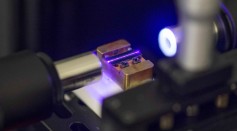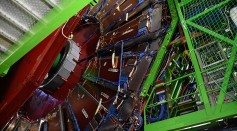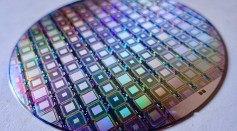quantum physics

Quantum ‘Anti-Butterfly Effect’: New Approach to Deal with Complex Computer Performance Developed

Scientists Built Model of Quantum Entanglement Using Existing Fiber Optic Structure and Atomic Particles for the First Time: Is Quantum Internet Possible?
Photonic Sensors at Quantum Limit Developed for More Practical Applications Like Greenhouse Gas Monitoring, Cancer Detection

Quantum System: Physicist Develop New Approach Enabling Atoms to Roll Down Like Marbles in a Light Bowl

Frozen Tardigrade Discovered As World's First-Ever Animal to Enter Quantum State

UCF Scientists Develop the First Ever Optical Oscilloscope that Measures the Electric Field of Light

For the First Time Large Hadron Collider FASER Experiment Reveals Ghost Particle Neutrinos
Novel Electronic Component Made of Germanium Bonded With Aluminum Could Be the Key to Quantum Technology

Quantum Sensors May Reveal Dark Matter According to NIST Physicists

New Material Superconductor To Revolutionize Quantum-Information Based Tech

University of Sydney Researchers Identify Quantum Error Computing Source with Machine-Learning Techniques
Quantum Tech One Step Closer With New Single Photon Switch
First-ever Ultracold Atom Interferometry in Space Opens Up Possible Breakthroughs in Physics
A New Timekeeping Theory Reconciles Einstein's Relativity and Quantum Clocks
Most Popular

How Technology Is Changing the Real Estate Industry?

AI Revolution in Medical Education: Transforming How Healthcare Professionals Learn

Nikolay Karpenko Biography, Photo, Career, Accomplishments

Zombie Star Set to Light Up Night Sky: Blaze Star Could Erupt Soon





